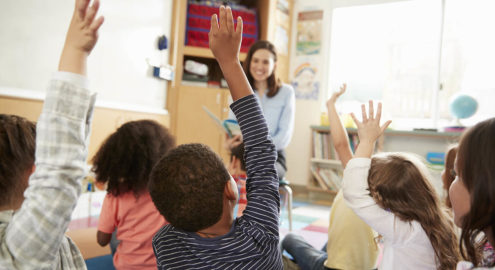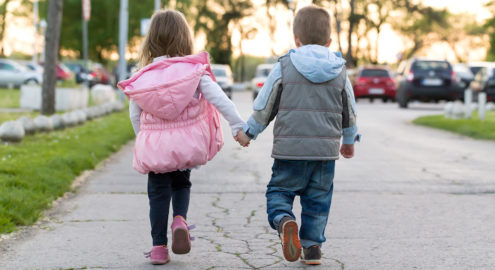What Are They?
What is Trauma?
According to SAMHSA (Substance Abuse and Mental Health Services Administration), “Trauma results from an event, series of events, or set of circumstances that is experienced by an individual as physically or emotionally harmful or threatening and that has lasting adverse effects on the individual’s functioning and physical, social, emotional, or spiritual well-being.”
In the United States alone, more than 1 in 3 children have had at least one adverse childhood experience (ACE), such as exposure to violence or drug abuse, the loss of a family member, and physical or sexual abuse.
Researchers distinguish single-incident “trauma” (e.g., a sexual assault), from “complex trauma,” occurring after multiple incidents (e.g., emotional neglect), often at the hand of a significant caregiver. Researchers are also bringing more attention to intergenerational trauma (e.g., sexual abuse, addiction) and/or historical trauma (e.g., effects of colonization and/or forced assimilation) and how maternal and paternal traumatized states may impact their children.
Some traumatic events may not be life-threatening, yet chronically negative interpersonal events can have a detrimental effect on our minds and bodies. In fact, more subtle and insidious forms of trauma like discrimination, racism, oppression, and poverty can be fundamentally life-altering.
Lisa, a Korean American student, experiences regular microaggressions at school. Students ask her: “What are you”? And some have commented with surprise, “Well, you speak English well.” Microaggressions are slights or insults, whether intentional or intentional, to people from marginalized groups. If Lisa experiences them regularly, she may end up feeling more anxious and depressed—and she may be less likely to perform well academically.
Of course, how we adapt and respond to stress in the short-term can have long-term effects, but we can ultimately become more resilient, despite adversity.
What are Trauma- and Resiliency-Informed Schools?
Research tells us that the presence of a stable, consistent adult in a child’s life may be one of the best predictors of resilience. Safe and secure relationships at school can play a crucial role in a student’s learning and development as well as their healing from trauma. In fact, a recent study of teens links school connectedness with healthier outcomes in adulthood related to mental health, violence, sexual behavior, and substance use.
“Trauma-informed” (or trauma-sensitive) schools acknowledge the prevalence of trauma, recognize its effects on students, implement trauma-sensitive practices and policies to address it, and avoid practices at school that can retraumatize students.
Resiliency-informed schools believe in the paradigm shift from conventional thinking of “What is wrong with you?” to trauma-informed thinking, “What happened to you?” to resiliency-informed thinking, “What are your strengths?” and “What is right about you?“
Shifting Your Perspective
Adapted by Elaine Miller-Karas TRI© from a slide by Jane Stevens (ACES Connection)
Conventional Perspective –>Trauma-Informed Perspective–>Resiliency-Informed Perspective
- People are bad. –> People are suffering. –> People are resilient.
- People need to be punished. –> People need an effective intervention. –> People need our compassion as they learn new skills.
- People just don’t care. –> Many people care, but lack understanding and skills. –> Any person can learn self-regulation skills based on science.
- We need to stop making excuses for people. –> We need to learn how trauma impacts a child’s and adult’s development. –> We need to learn how skills of well-being can reduce suffering.
- What is wrong with you? –> What happened to you? –>What is right with you? What are your strengths?
Why Are They Important?
Research clearly demonstrates that the cumulative effects of trauma can be detrimental. Here are a few examples:
Trauma can affect students’ physical and mental health, and impair student learning, but resiliency practices can lessen the impact of trauma.
- A CDC study of over 17,000 adults indicates that greater exposure to adverse childhood experiences (ACES) can lead to more negative health outcomes in adulthood, including heart disease, cancer, and chronic lung disease.
- Childhood trauma has been associated with an increase in mental health conditions, including depression, anxiety, conduct disorder, PTSD, and ADHD.
- A review of 83 studies indicates that students’ struggles with cognitive functioning (e.g., reasoning, memory, attention, and language) and academic functioning (i.e., measured through grades and standardized test scores) can be linked to trauma exposure.
- Yet researchers also suggest that Positive Childhood Experiences (PCEs), such as a sense of belonging at school, participation in community traditions, and supportive friends can all ameliorate the impact of ACES.
- The CDC recommends ways to cultivate resilience in their report Preventing Adverse Childhood Experiences (ACES). For example, a focus on high quality child care, social emotional learning, mentoring programs, and after school programs may all contribute serve to bolster resilience.
Trauma can be linked to risky behaviors and interpersonal challenges at school, but building resilience can mitigate the impact of adverse childhood experiences and increase students’ school engagement.
- A large study demonstrates that the greater a person’s exposure to adverse childhood experiences, the more likely they are to engage in behaviors like early intercourse, promiscuity, smoking, alcoholism, and illicit drug use.
- Students’ responses to chronic stress and trauma can affect their ability to self-regulate along with their relationships with teachers—ultimately impacting their engagement. For example, students’ interpersonal challenges might include lower levels of trust, poor perspective-taking ability, limited social skills, and some difficulty in understanding social interactions.
- However, a study conducted through John Hopkins suggests that building resilience, defined in the survey as “staying calm and in control when faced with a challenge,” for children ages 6-17 can ameliorate the negative impact of adverse childhood experiences. The study found higher rates of school engagement among children with adverse childhood experiences who demonstrated resilience.
Trauma can change the brain, but cultivating resilience helps our brain adapt and grow.
- Research suggests that chronic stress can affect the brain structurally and functionally, and the areas of the brain most affected by trauma include the hippocampus (associated with memory), the amygdala (associated with emotional responses), and the prefrontal cortex (associated with planning, impulse control, and executive functions).
- However, neural plasticity and malleability, the brain’s ability to change and reorganize in response to everyday experiences (or “stressors”), remains essential to adaptation and survival throughout our lives.
- Researcher Bessel van der Kolk claims that a brain-disease model doesn’t acknowledge 1) our capacity to heal one another; 2) our ability to use language to share our experiences and find meaning; 3) our ability to regulate our own bodies through breath, movement, and touch; and 4) our drive to change social conditions and create environments where both children and adults can thrive.
Ultimately, trauma- and resiliency-informed schools and practices can play a role in bolstering students’ resilience as they learn to respond to stressors in their environment. We have the capacity for healing in our school communities.
Here is a list of evidence-based approaches for fostering resilience at school.
Practices

Take-Home Skill: Pleasant Events Calendar for Kids and Teens

Pleasant Events Calendar for Students

Imagining Flourishing and Kindness: A Mindfulness Practice for Adults

Mindful Reflection Process for Developing Culturally Responsive Practices

Common Beliefs Survey: Teaching Racially and Ethnically Diverse Students

Loving-Kindness for Someone You Care About

A Moment for Me: A Self-Compassion Break for Teens

Mindful Seeing for Elementary Students

Mindful Listening for Students

Meaningful Photos for Students

I See You. Everyone Matters.

Finger Tracing: Mindful Breathing for Students

Loving-Kindness Buddy Wishes

Flow and Tell

Shake It Off

Mindful Movement for Teens

Feeling Connected for Students

Drawing as a Way to Manage Emotions

Do you want to dive deeper into the science behind our GGIE practices? Enroll in one of our online courses for educators!


